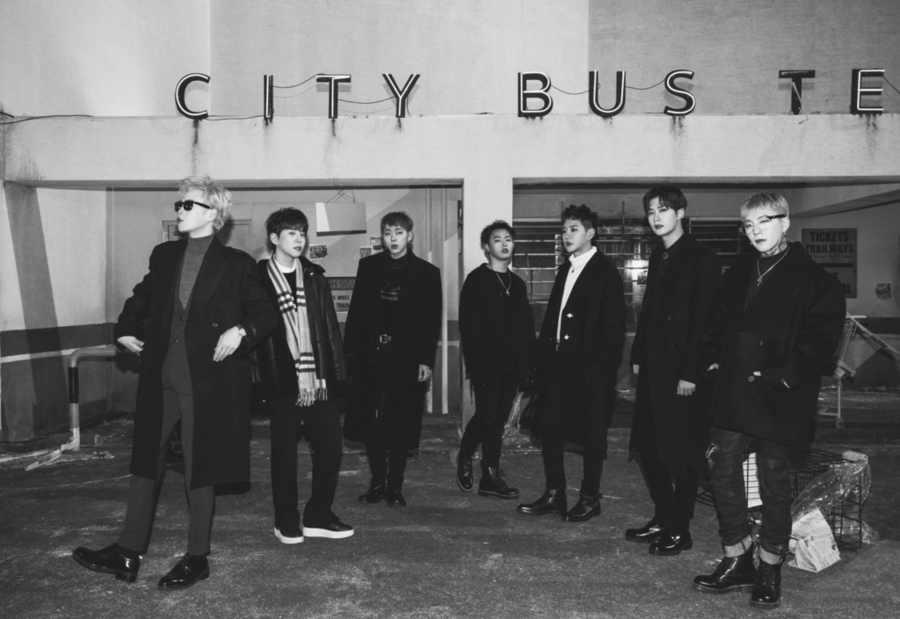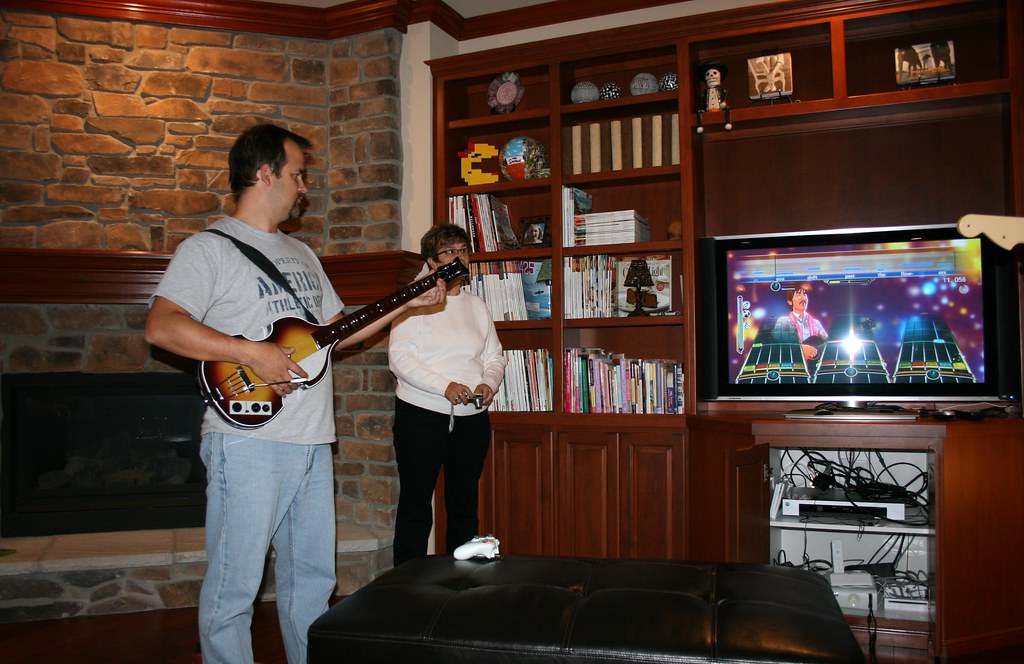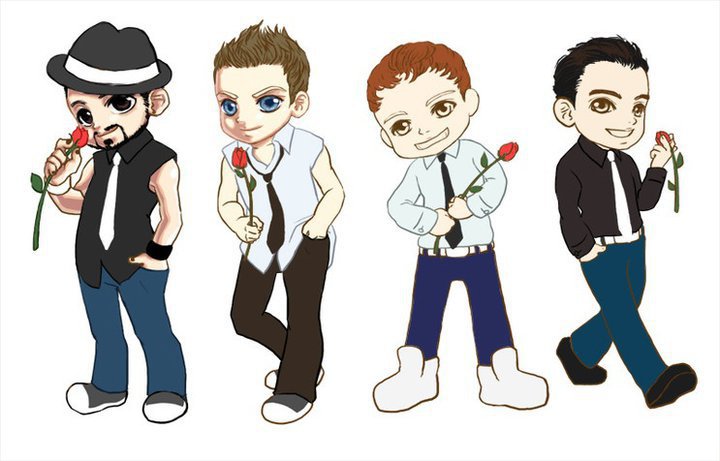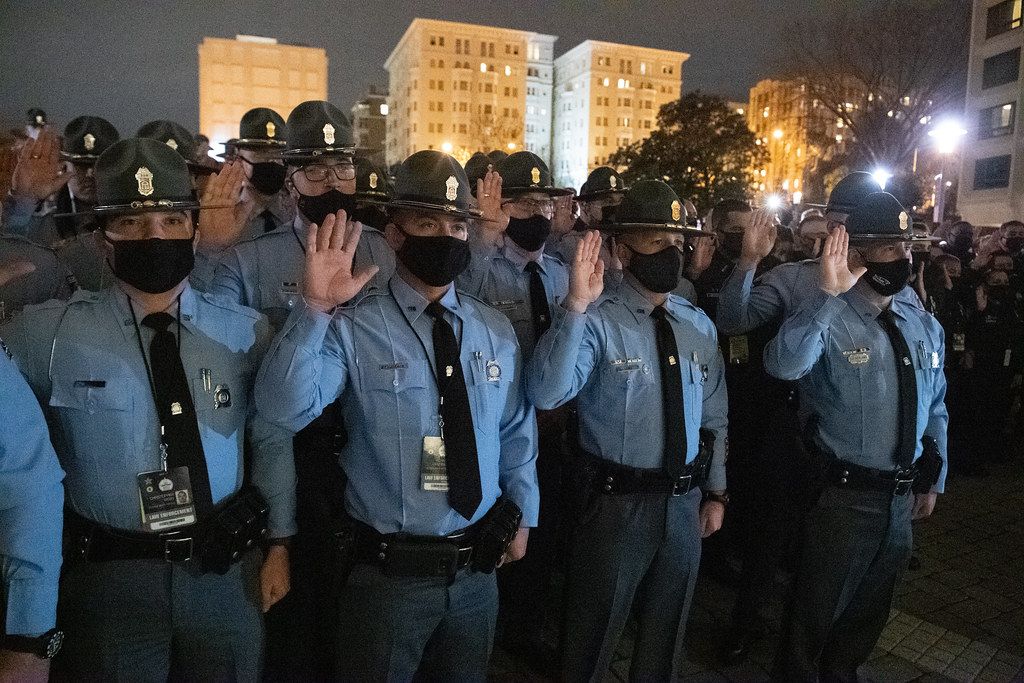
Remember those posters on your wall? The synchronized dance moves? The catchy choruses that lived rent-free in your head for months (and let’s be real, still do)? Boy bands have been a cornerstone of pop culture for decades, giving us anthems of love, friendship, and sometimes, even heartbreak. Their infectious energy and undeniable charm often masked the intense pressures behind the scenes, pressures that, more often than not, led to the dreaded announcement: ‘We’re taking a break.’
Ah, the infamous ‘break.’ It’s a word that echoes through boy band history, a seemingly innocuous term that frequently signals the beginning of the end. From the moment Justin Timberlake dropped his solo album bombshell, setting off alarms for *NSYNC fans, to countless other groups navigating similar paths, these ‘breaks’ rarely remain temporary. Instead, they often become permanent goodbyes, leaving fans to wonder what really happened behind closed doors.
But what exactly *did* happen? While public statements often paint a picture of amicable partings or mutual exhaustion, the truth is frequently far more nuanced. Hidden resentments, creative clashes, the yearning for individual identity, and the sheer grind of fame all contribute to the unraveling of these meticulously crafted pop machines. We’re diving deep into some of the most iconic boy band breakups to uncover the moments, and perhaps the unspoken meetings, that set them on their separate ways.

1. **New Kids on the Block: Paving the Way and the First Farewell**New Kids on the Block, or NKOTB as they were affectionately known, weren’t just a boy band; they were *the* boy band that laid down the blueprint for virtually every group that followed. Think about it: Backstreet Boys, *NSYNC, and countless other cute dudes who could carry a tune owe a huge debt to Donnie, Joey, Jordan, Jonathan, and Danny. They trailblazed through the late ’80s and early ’90s, becoming global sensations and truly shattering hearts when they initially called it quits after a whirlwind decade, from 1984 to 1994.
Their breakup wasn’t just a moment in time; it was a cultural event that left a generation of fans reeling. Imagine growing up with their posters plastered across your bedroom walls, only to hear that the dream team was disbanding. It marked the end of an era for many, signaling that even the most seemingly invincible groups could fall victim to the pressures of the industry and the natural evolution of individual desires.
Fortunately for their legions of loyal fans, this wasn’t truly the end of their story. In a testament to the enduring power of boy band nostalgia (and perhaps a good business meeting or two), NKOTB reunited in 2008. Since then, they’ve been steadily touring, proving that some bonds, and some fanbases, are simply unbreakable. They may not have released a new album since 2013, but they’ve kept the party going, even hitting the road with Nelly and TLC in the summer, proving that ’90s nostalgia is truly unstoppable.
This reunion wasn’t just a one-off; it solidified their place as elder statesmen of the boy band world. It showcased that sometimes, after a long enough “break,” the initial reasons for parting can fade, replaced by a renewed appreciation for shared history and the undeniable joy of performing their classic hits for devoted fans who still know every single lyric. It’s a heartwarming success story in a genre often filled with heartbreak.
2. ***NSYNC: The Break That Wasn’t Really a Break**Ah, *NSYNC. They dominated the late ’90s and early 2000s with their infectious pop anthems and smooth harmonies, but their story is a classic example of the ‘break’ turning into a full-blown breakup. The moment Justin Timberlake announced his plans to record a solo album, the writing was pretty much on the wall for the quintet. While he diplomatically told the New York Post that “The break we’re on was a conscious move. We all wanted to do it, and we were ready to do it,” the underlying truth was much more complex.
Can you really blame them, though? Justin elaborated, “Performing at stadiums every night for 50,000 fans takes a little out of you. I was 14 when we started, and we’ve been touring for the last seven years. The time was right; we were all in the same zone. This album is what I wanted to do.” The relentless touring schedule, the constant travel, the pressure to perform night after night – it’s enough to exhaust anyone, especially young artists who started out as teenagers. The desire for a pause, or even a change of pace, is completely understandable.
However, what Justin called a “break” in 2002 was, in hindsight, a total, definitive breakup. Despite the initial framing, the group never made music together again after that year, save for a brief, glorious reunion at the MTV Video Music Awards in 2013 that sent fans into an absolute frenzy. That fleeting performance only served to highlight what had been lost, rather than signaling a genuine return.
The reality is that solo aspirations, particularly when one member develops a massively successful individual career, can become an insurmountable hurdle for a group. The individual creative vision starts to outweigh the collective goal, and the band structure simply can’t contain it anymore. For *NSYNC, Justin’s undeniable talent and ambition pulled him in a direction that ultimately meant leaving the boy band dynamic behind, much to the chagrin of millions of fans who still dream of new music.

3. **LFO: The Sweet Charm of a One-Hit Wonder’s End**LFO, the trio behind the world’s best (and, okay, probably *only*) love song that cleverly name-drops both Abercrombie & Fitch and *The Color Purple*, holds a unique place in the boy band hall of fame. Their summer anthem, “Summer Girls,” was undeniably catchy and ingrained itself into the pop culture fabric of the late ’90s. Yet, despite its massive success, LFO struggled to shake off the ‘one-hit wonder’ label that inevitably followed.
They did try to follow up their breakout hit with another worthy jam, “Girl on TV.” They even managed to convince the one and only Jennifer Love Hewitt to star in the music video, which was a pretty big deal back then! But even with a celebrity cameo, the unique charm of lyrics like “Shooby-doo-wop and Scooby Snacks, met a fly girl and I can’t relax” could only carry a group so far in the fickle world of pop music.
The challenge for LFO, and many acts like them, was translating initial novelty success into a sustainable career. While “Summer Girls” was a smash, establishing a consistent musical identity beyond that particular niche proved difficult. This often leads to a quiet fading from the spotlight rather than a dramatic public breakup, as the momentum simply can’t be maintained.
Their story is a bittersweet reminder that sometimes, despite a truly memorable track and a dedicated effort, the stars just don’t align for long-term group success. The absence of a “secret meeting” or a major internal drama often means the band simply dissipates as opportunities dwindle and individual paths diverge without much fanfare. It’s a common, if less scandalous, trajectory in the music industry.

4. **Dream Street: The Launchpad for a Solo Star**Before Jesse McCartney became a Disney heartthrob and a solo artist with chart-topping hits, he was part of Dream Street, a boy band comprised of five tweens. These guys were the epitome of early 2000s teen pop, rocking spiked hair and chain necklaces, and providing the soundtrack for many a tween crush. While their time together was relatively brief, lasting only a couple of years (1999–2002), it was undeniably impactful for at least one of its members.
Dream Street served as a significant launchpad for Jesse McCartney. His tenure in the group was enough to catapult him into the realm of Young Hollywood heartthrobs, paving the way for a successful solo career. He went on to star in a bunch of movies, mostly made for TV but still highly visible, and delivered bops like the 2004 hit “Beautiful Soul,” which became an anthem for a generation.
The story for the other four band members, however, took a different turn. While Jesse soared, the others largely stayed out of the intense glare of the spotlight. Chris Trousdale, for instance, made a memorable (though ultimately unsuccessful) attempt to reignite his career by competing on *The Voice* in 2012, where he was immediately rejected by all four judges. It’s a stark illustration of how quickly paths can diverge once a group disbands.
Jesse McCartney’s continued success, even with a recurring role on an ABC Family series like *Young & Hungry*, highlights a familiar pattern in boy band breakups: one member often emerges as a clear breakout star, while the others struggle to maintain visibility. This dynamic, while not always the *cause* of a breakup, certainly shapes its aftermath, demonstrating how individual talent can ultimately overshadow the collective identity.

5. **98 Degrees: A Long Break and a Successful Return (of Sorts)**98 Degrees carved out their niche in the late ’90s and early 2000s with their smooth R&B-infused pop sound, often seen as a slightly more mature alternative to some of their contemporaries. Unlike many boy bands, they are technically *together* at the moment, which is a rare feat! However, their journey wasn’t without a significant pause, a nearly decade-long “break” between 2003 and 2012 – there’s that word again, signaling uncertainty.
During their hiatus, the members explored various individual ventures, proving that life outside the boy band bubble could be pretty interesting. Nick Lachey, for example, became a household name thanks to his MTV reality show *Newlyweds* with his then-wife Jessica Simpson. His brother, Drew Lachey, showed off his moves and charisma by winning *Dancing with the Stars*, while Jeff Timmons even ventured into politics, running for mayor!
These individual successes often fuel the narrative that a group is truly over, as members find new passions and independent avenues for fame and fortune. The scattering of their careers across reality TV, local politics, and dance competitions seemed to indicate a permanent farewell to 98 Degrees as a collective musical force.
Yet, defying the odds, they orchestrated a comeback! In 2013, the same year they dropped a comeback album, they toured with the reunited New Kids on the Block and Boyz II Men, tapping into that powerful vein of ’90s nostalgia. While they haven’t released any new music since, their ability to regroup and tour successfully demonstrates that some boy band bonds, even after extensive individual pursuits, can indeed be rekindled for a new chapter, even if it’s not a full-time return to the studio.
Now, let’s keep this roller coaster of emotions going as we explore the more recent and often dramatic splits of prominent boy bands. We’re talking about those behind-the-scenes struggles, the creative clashes that couldn’t be resolved, and the sometimes-messy legal battles that turned innocent ‘hiatus’ announcements into full-blown heartbreaks. Get ready to peel back the curtain on O-Town, B2K, The Wanted, One Direction, and even the seemingly indestructible Backstreet Boys! It’s a wild ride, so buckle up!

6. **O-Town: From Reality TV to a Resurfacing Act**Remember O-Town? They burst onto the scene in the early 2000s, born from the reality TV show ‘Making the Band,’ which was essentially a masterclass in how to assemble a pop group from scratch. After a whirlwind few years, they decided to call it quits in 2003, leaving a generation of fans wondering if ‘Liquid Dreams’ would forever be just that—a dream.
Fast forward a few years, and guess what? Like our friends 98 Degrees, the guys from O-Town (who are now, ahem, in their 40s – feel old yet?) decided to get back together! It’s a testament to that enduring boy band spirit, or maybe just the undeniable lure of nostalgia, that even after a decade apart, these groups can find their way back to the stage.
Their biggest claim to fame during their initial run? Well, it’s a toss-up between their questionably appropriate but undeniably catchy hit ‘Liquid Dreams,’ which probably made your parents blush, and their memorably-named frontman, Ashley Parker Angel. He was the one with the piercing blue eyes and the whole ‘angsty heartthrob’ vibe.
Ashley Parker Angel became quite the sensation, showing that even within a collective, individual personalities can shine incredibly bright. While the group found success with their catchy tunes, it’s clear that the blend of reality TV origins, memorable singles, and charismatic members like Ashley secured their place in the early 2000s pop landscape, even if their initial run was brief. Their reunion, though not releasing constant new music, proved that some bonds are just too strong to ever truly break.

7. **B2K: Millennium Boys and a Blockbuster Flop**Speaking of early 2000s icons, who could forget B2K? This group was ‘Boys of the New Millennium’ (or B2K for short, a surprisingly catchy abbreviation for something so confusing!) and they brought a fresh, street-dance vibe to the boy band scene. Fronted by the undeniably talented Omarion, they were poised for superstardom.
They even got the ultimate stamp of approval from hip-hop royalty: a coveted Puff Daddy (or P. Diddy, as he briefly went by) cosign on their absolute monster single, ‘Bump, Bump, Bump.’ That track was everywhere, cementing their place as a force to be reckoned with and proving that a good feature can take a song from great to legendary.
However, despite their musical success, their journey hit a major snag when their street-dance movie, *You Got Served*, didn’t quite serve up the box office magic they’d hoped for. It was a classic case of trying to expand the brand, only to find that the silver screen wasn’t as forgiving as the music charts.
After the movie’s less-than-stellar performance, the boys split, leading Omarion to pursue a solo career that has seen him continue to drop hits. In fact, just this past summer, he released ‘I’m Up’ featuring Kid Ink and French Montana, a track many have hailed as possibly his best since the glory days of ‘Bump, Bump, Bump.’ It’s a poignant reminder that even when a group disbands, the individual members often find new ways to shine, carrying their legacy forward.

8. **The Wanted: From British Rivals to Solo Endeavors**Across the pond, British boy band The Wanted made their mark in the late 2000s and early 2010s, often finding themselves in a friendly (or not-so-friendly) rivalry with another little group called One Direction. At the start of 2014, they made an announcement that sent shivers down the spines of fans everywhere: they were taking a ‘brief hiatus.’ Oh, that word again!
History has taught us that a ‘brief hiatus’ in boy band speak often translates to ‘we’ll see you in a decade… maybe.’ And sure enough, a year and a half later, it looked like the boys were all happily enjoying their solo lives, proving that once that door to individual ambition swings open, it’s tough to close it.
It’s fascinating to see how each member carved out their own path. Nathan Sykes and Max George, for instance, both landed spots on Scooter Braun’s label, which is pretty much like getting a golden ticket in the music industry. Talk about a vote of confidence in their solo talents!
Meanwhile, Jay McGuiness decided to trade the microphone for dancing shoes, joining the cast of *Strictly Come Dancing*. This kind of diversification is super common after a boy band split; members often explore acting, reality TV, or other entertainment avenues beyond just music. It just goes to show that while the group dynamic is powerful, individual members often have diverse talents and aspirations that eventually pull them in different directions, leading to the dreaded ‘hiatus’ turning into a permanent farewell.

9. **One Direction: The Inevitable Forces of Fame**Ah, One Direction. Their breakup hit like a meteor, didn’t it? But really, it was almost inevitable. The context explains that ‘no matter how massively popular a boy band becomes, there are relentless forces that almost always break them apart in the long run.’ It’s like a pop culture law of physics. The members grow up, they become absurdly wealthy, and that relentless cycle of touring, recording, and promotion can truly beat them down.
What does this mean for the guys who wanted to be in control? They start yearning for it. They dream of going solo. Musical trends shift, and those tween fans who adored them eventually grow up and move on to new sounds. Then, the inevitable happens: one member starts getting more attention, causing tension and bitterness within the ranks. And, of course, younger teen idols emerge, ready to fill the void.
For One Direction, that first crack appeared when Zayn Malik made his exit in 2015. He didn’t mince words, telling Fader magazine, ‘There was never any room for me to experiment creatively in the band.’ Imagine being in one of the biggest bands in the world, yet feeling stifled! He recounted trying to infuse a ‘slightly R&B’ or ‘slightly myself’ sound into his vocals, only for it to be recorded ’50 times until there was a straight version that was pop, generic as , so they could use that version.’ Oof, that’s rough!
Zayn’s candidness continued in an interview with Apple Music’s Zane Lowe, where he confessed, ‘I think I always wanted to go, from like the first year, really.’ He initially joined because it was ‘there at the time,’ but quickly realized ‘the direction we were going in — mind the pun — with the music, I instantly realized it wasn’t for me, because I realized I couldn’t put any input in.’ It was a profound clash of individual artistic vision versus group conformity.
One Direction officially split later that same year, and a couple of years down the line, Malik revealed he wasn’t even on speaking terms with his former bandmates. It’s a stark, almost heartbreaking illustration of how the pressures of fame, creative differences, and the desire for personal expression can completely unravel even the most tightly-knit, globally adored boy bands, turning former friends into strangers.

10. **Backstreet Boys: The Enduring Brotherhood (Mostly!)**Now, for a true anomaly in the boy band universe: the Backstreet Boys. You ready for this? Believe it or not, these legends have *never* officially broken up in their almost 20-year history! Seriously, that’s like finding a unicorn that can sing perfect harmonies. While they’ve had their moments of drama (because, let’s be real, who hasn’t?), they’ve managed to largely stick together.
However, even the strongest bonds can fray. In 2006, after touring to promote a ‘not-super-well-received so-called comeback album’ (ouch!), Kevin Richardson – you know, ‘the facial hair one’ – decided to ‘peace out’ to pursue solo projects. It was a moment that made fans hold their breath, wondering if this was finally the end of the Boys as we knew them.
But here’s where the story gets even more interesting: those ‘solo projects’? The context hilariously states ‘Zero solo projects later,’ Kevin officially returned to the group in 2012! It’s a sweet, slightly ironic twist that proves sometimes, the grass isn’t always greener, and the pull of the brotherhood (and probably those epic concert checks) is just too strong to resist.
They truly showed ’em what they were made of, touring for two years straight from May 2013 to June 2015, a period beautifully captured in their documentary, *Backstreet Boys: Show ‘Em What You’re Made Of*. This resilience, this ability to navigate individual departures and triumphant returns, makes the Backstreet Boys a fascinating case study in boy band longevity.
So, if you’re still shedding a tear over One Direction, take heart! While the pain of a boy band breakup is real, the history books (and our very own nostalgic hearts) tell us there’s ‘one enduring truth in this universe: boy bands always — always — reunite.’ So go ahead, cry now. But also, maybe start saving up for that front-row ticket to the inevitable reunion concert tour. Because as we’ve seen, the boys always come back, bringing with them a tidal wave of nostalgia, catchy tunes, and perhaps, a slightly better haircut or two (looking at you, A. J. McLean, with your token terrible hair!). The cycle continues, and for devoted fans, that’s the best news of all!



